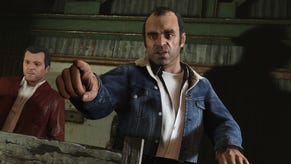Epic expects photo-realism in a decade
Boss Tim Sweeney says it's "inevitable".
Epic's Tim Sweeney reckons games achieving graphical realism is not only "inevitable", but will happen in the next 10 to 15 years.
"We're only about a factor of a thousand off from achieving all that in real-time without sacrifices," Sweeney told Gamasutra. "So we'll certainly see that happen in our lifetimes; it's just a result of Moore's Law. Probably 10-15 years for that stuff, which isn't far at all."
To Sweeney, graphical realism consists of "completely realistic lighting with real-time radiosity, perfectly anti-aliased graphics, and movie-quality static scenes and motion". That paltry task can be tackled simply by sheer brute force computing power, said Sweeney. The real challenge, he argued, will be replicating realistic human intelligence and behaviour.
"A state-of-the-art game like the latest Half-Life expansion from Valve, Gears of War, or Bungie's stuff is extraordinarily unrealistic compared to a human actor in a human movie, just because of the really fine nuances of human behavior," he said.
"We simulate character facial animation using tens of bones and facial controls, but in the body, you have thousands. It turns out we've evolved to recognise those things with extraordinary detail, so we're far short of being able to simulate that."
Epic Games' Unreal Engine 3 continues to power the majority of this generation's games, and the studio has been equally successful with the Gears of War series on PC and Xbox 360.
Head over to our Gears of War 2 review to see what it's all about.







